
Explore Amana vs Trane.
Looking to cool your home this summer?
The options are varied, but we’ve found a couple of standout companies whose air conditioning units offer exceptional energy efficiency and environmental sustainability.
One of them also provides superior peace of mind regarding product warranties.
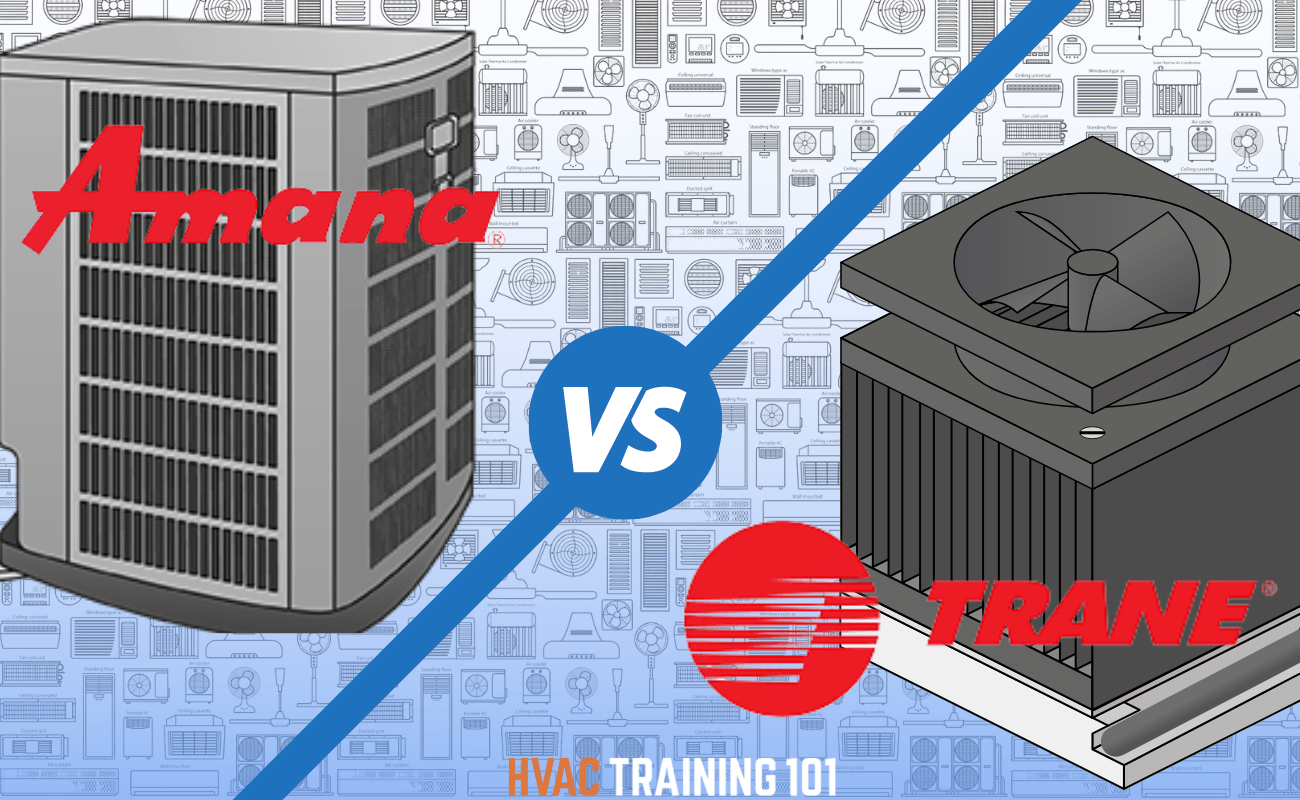
Here’s an overview of our comparison guide if you want to see the key differences.

Amana
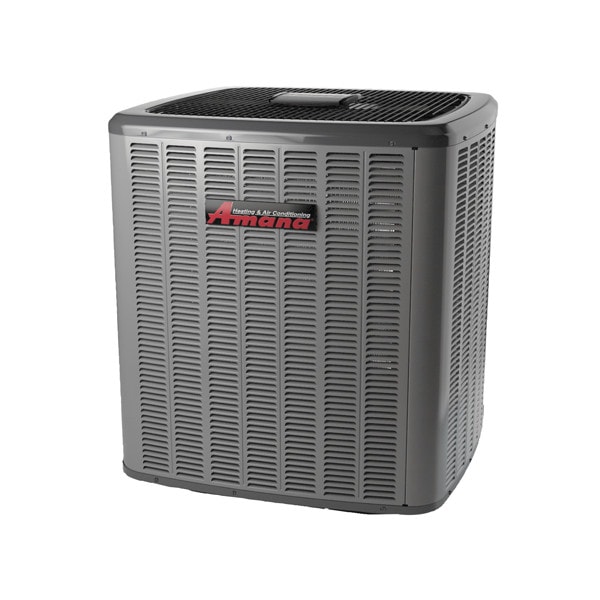
Trane
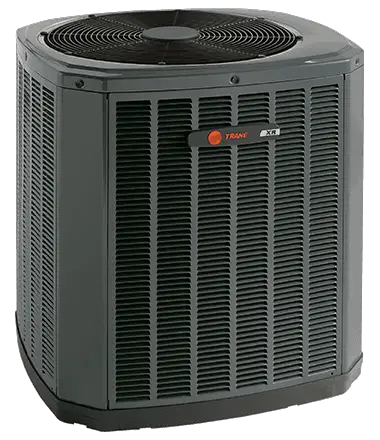
Pros
Amana
Lifetime warranty on compressor and heat exchanger
Some of their units score a SEER rating of 24.5 for energy efficiency
Exceptionally robust units
Trane
Known for their quality
Entry-level units have an excellent SEER score of 16
Their units are known for their quiet motors
Cons
Amana
Some units can be noisy
SEER rating for entry-level product scores 13
Trane
Their warranty is not as extensive as Amana
They are not head-quartered in the USA
Founded in 1934 by George Foerstner, Amana manufactured the first upright freezer in 1947, adding a side-by-side refrigerator two years later. Amana also manufactured the first portable microwave oven and expanded it into various other home appliances, including ovens, dishwashers, countertop ranges, clothes washers, and dryers.
Goodman Global, a heating-and-cooling manufacturer, purchased the company in 1997. They then sold it to Maytag in 2002, though Goodman Global still owns its furnace and air conditioner sector.
And it is the air-conditioners we’re interested in for this review. Amana began making them way back in 1954, which means they’re well-positioned to meet your home’s heating and air conditioning needs.
Amana boasts an extensive nationwide footprint of HVAC professionals able to advise and complete installations in your area. Few companies can claim to have eased the burdens of day-to-day American home life as much as Amana.
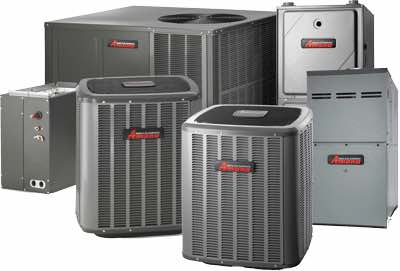 Photo credit: modernize.com
Photo credit: modernize.com
Trane is even older than Amana, with roots in Wisconsin. Founded in 1913 by Norwegian immigrant James Trane, the company started as a plumbing and pipe-fitting shop. Trane’s son Reuben invented a convector radiator in 1923 and established the company as a true innovator of new products.
It was only a matter of time before it branched into air-conditioning, and in 1931 Trane developed its first HVAC unit.
In 2007 Trane was acquired by Ingersoll Rand and is now headquartered in Ireland.
Its notable projects include Europe’s most extensive cooling system, installed inside the 31 miles long Channel Tunnel.
Trane has also installed systems into the Washington Monument, the Statue of Liberty, and the world’s tallest building, the Burj Khalifa in Dubai.
While these installations are impressive, we’re going to focus on its entry-level residential units for today’s comparison.
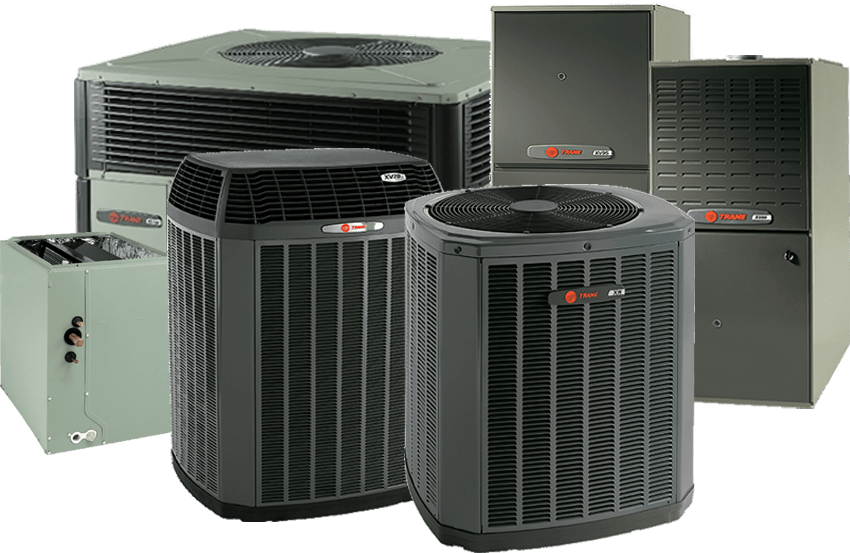 Photo credit: airassurance.com
Photo credit: airassurance.com
Both companies claim to offer cutting-edge technology, but how do they measure up in terms of putting their money where their mouths are?
Amana
Trane

|
 
|

|
|
Houston, Texas |
Where Are Their Products Made? |
Mexico, USA, and India |
|
Daikin Industries |
Who Manufactures Their Products? |
Ingersoll Rand |
|
Goodman Global |
Who Owns These Companies? |
Ingersoll Rand |
|
1934 |
How Long Have They Been Around? |
1913 |
|
Five years, if the unit is not registered within the 60-day window of the installation date. It doesn’t cover labor costs.Register the product, and the warranty on the compressor and the heat exchanger lasts for as long as the original registered owner or their spouse own and reside in the home in which the unit was originally installed. It doesn’t cover labor costs.Extended Service Plans offer coverage that includes labor. |
What’s their Warranty Like? |
Base Limited warranty covers faulty parts due to manufacturing (1-20 years, depending on the product). It doesn’t cover labor costs.Register the product and activate the Registered Limited Warranty that covers products for an even longer period. Again, no labor costs are covered.Optional Extended Warranty. Additional coverage with labor included. It also covers routine maintenance and is available in 5, 10, or 12-year increments. |
Not much separates these two industry giants, but we surmised that Amana offers a slightly better warranty after drilling down into the nitty-gritty.
Should you purchase one of their air conditioning units, your compressor and the heat exchanger will remain covered for as long as you (or your spouse) reside in your home.
To claim this coverage, remember to register your unit within 60 days after installation, as mentioned in their warranty. It appears that Amana can offer this superior warranty because its units are so robust they may even last longer than Trane’s.
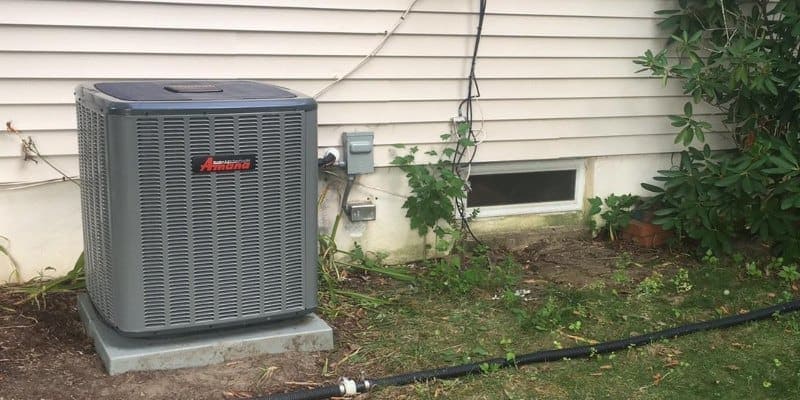 Photo credit: gadgetreview.com
Photo credit: gadgetreview.com
Amana’s other significant advantage relates to its SEER rating. SEER refers to Seasonal Energy Efficiency Rating. It compares the summer’s cooling output with the summer’s energy expenditure. What this means is that the higher the rating, the better a unit will score.
And what this really means is that a high score reflects greater efficiency, lower power costs, and a more ethical environmental footprint. Some of Amana’s top-end units score up to 24.5, and if you compare this with the industry average of 16.7, it becomes noteworthy. However,
Trane is no slouch either, with some air conditioner units measuring up to 22 points.
If environmental impact and energy bills are core considerations for you, then Amana might be your first choice.
Trane appears to be a brand synonymous with quality. Many technicians report that although Trane does not offer the same warranty as Amana, it doesn’t need to. Trane is slightly more expensive by some accounts, but as they say, ‘what you pay is what you get.’
Consumer reports indicate that Trane’s products are highly reliable air conditioning units and that their installation costs are, in many cases, lower than those for Amana’s products.
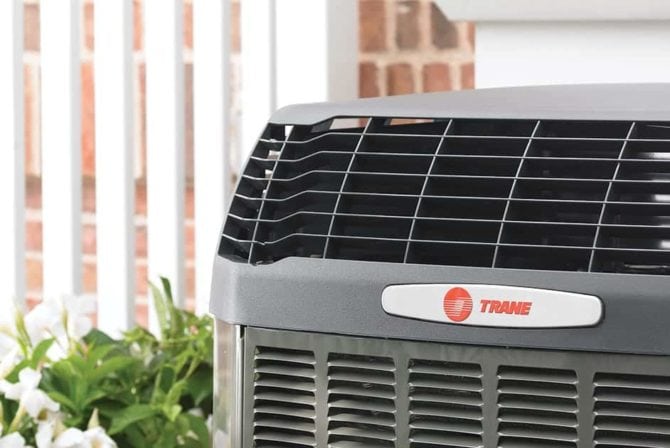 Photo credit: championac.com
Photo credit: championac.com
Possibly its most significant advantage is its quiet product line. At 70 decibels Trane barely beats Amana, who comes in at a respectable 70.3 decibels.
Trane insulates their units on multiple levels, which serves to dampen loud noises common to certain air conditioner types.
So, if you are prepared to trust Trane’s product and their Base Limited Warranty, then you can likely expect many years of high-quality ‘silent’ air conditioning.
Energy-related improvements to your home may result in tax credits. You might earn federal tax credits or state rebates by installing either Amana or Trane’s HVAC systems.
And these residential energy credits can be substantial. For example, homeowners can claim tax credits from – 0. In some instances, claims of up to 10% of the installed costs are justifiable (up to a maximum of 0).
It is well worth examining the energy tax credit programs available in your area. An excellent place to start is dsireusa.org (a local tax credit resource). Credits and rebates frequently change, so see what is currently available and work out your savings should you choose either Trane or Amana.
Both companies have an excellent national footprint, and registered technicians are freely available to complete installations. Their historical track record means you can purchase either of their products with relative confidence, and they will both meet your home comfort needs.
Let’s analyze specific consumer feedback provided on air conditioning systems.
 Photo credit: amana-hac.com
Photo credit: amana-hac.com
It appears that the amount of noise pollution from the motor, warranty value, and monthly running costs feature prominently in people’s minds. A favorable combination of all three wins the jackpot.
Amana produces an entry-level model which they list as the ASX13. Trane manufactures their popular XR14 unit in the same category. Let’s compare them.
The ASX13 model is Amana’s entry-level air conditioner and comes in around ,400, fully installed. It boasts an inline filter-drier and an energy-efficient compressor. A single-speed condenser fan motor drives the mechanism and offers excellent cooling capacity.
A galvanized steel enclosure protects the unit and is part of the reason why it runs so quietly.
Interestingly, the ASX13’s SEER rating of 14 is slightly lower than Trane’s entry-level air conditioner. This is surprising because Amana generally offers superior ratings on its premium products.
Nonetheless, the ASX13 still outperforms most similar makes on the market, and if it’s silent surroundings you’re after, this model will suit you.
Trane provides a strong competitor with their XR14 unit, also coming in at ,400 fully installed. Note that technicians may charge you more in certain areas, but this is true of both companies.
The main advantage of the XR14 is its superior SEER rating, which comes in at 16, beating the Amana unit by two points. This means the model earns an Energy Star logo, so you can expect energy savings of up to 50%.
So, if economical monthly running costs matter most to you, then the XR14 is a likely choice for you.
 Photo credit: trane.com
Photo credit: trane.com
Trane shines at the entry level. Their XR14 scores high in the energy efficiency stakes and may sway the budget-constrained user who prefers a unit with a lower carbon footprint.
However, Amana is known for its excellent warranties and overall high SEER ratings with top-end models. While their rating on the ASX13 model is slightly lower than Trane’s in this case, the difference is not necessarily significant. And their excellent warranty record more than makes up for it.
We’ve put together a handy guide that covers the most common questions we get asked every day.
Amana offers a lifetime warranty on the compressor and the heat exchanger components of their units. This means you can expect their models to last around 20 years.
The expected lifespan of a Trane unit is a respectable 15 to 20 years.
Amana is a well-established brand and consistently scores 4-5 stars in online consumer reviews. Their units come with a product warranty unrivaled in the HVAC business.
Explore Amana vs Trane.
Home » Air Conditioners » Air Conditioner Brands » Amana vs Trane – Which Brand To Trust For Air Conditioning?

My name is Bob Wells and I am a retired HVAC tech from Washington state. I am currently retired and no longer do much with HVAC, however, I feel like I have a lot of knowledge in the subject and I wanted to create a website where I could talk about what I've learned and help upcoming HVAC techs. Find more info about me and HVAC Training 101.